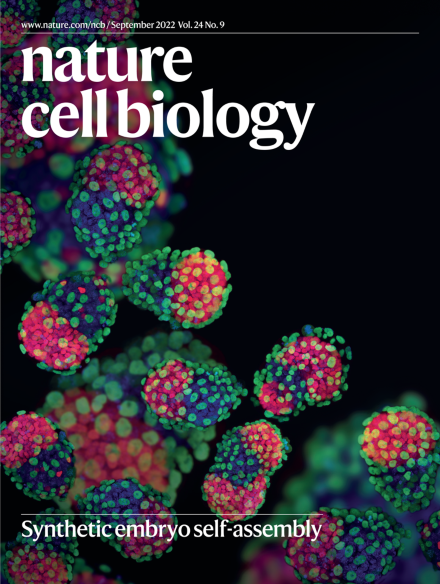应激下的拮抗干细胞命运支配着头发变白和黑色素瘤之间的决定。
IF 19.1
1区 生物学
Q1 CELL BIOLOGY
引用次数: 0
摘要
暴露量,即个人一生的环境暴露,会对健康产生深远的影响。体细胞组织随着年龄的增长功能衰退,表现出典型的衰老表型,包括头发变白和癌症。然而,每种表型背后的特定基因毒素、信号和细胞机制在很大程度上仍然未知。在这里,我们报告了黑素细胞干细胞(McSCs)和它们的生态位通过拮抗、应激反应途径协调地决定了个体干细胞的命运,这取决于所发生的基因毒性损伤的类型。小鼠McSC命运追踪显示,McSC在DNA双链断裂的反应下发生细胞衰老偶联分化(seno-differentiation),导致其选择性耗竭和头发变白,有效地预防黑色素瘤。相反,即使在双链断裂的细胞中,致癌物也可以通过激活花生四烯酸代谢和利基来源的KIT配体来抑制McSC的衰老分化,从而促进McSC的自我更新。总的来说,单个干细胞克隆的命运——扩增与衰竭——通过与生态位的相互作用,累积和拮抗地控制着衰老表型。本文章由计算机程序翻译,如有差异,请以英文原文为准。
Antagonistic stem cell fates under stress govern decisions between hair greying and melanoma.
The exposome, an individual's lifelong environmental exposure, profoundly impacts health. Somatic tissues undergo functional decline with age, exhibiting characteristic ageing phenotypes, including hair greying and cancer. However, the specific genotoxins, signals and cellular mechanisms underlying each phenotype remain largely unknown. Here we report that melanocyte stem cells (McSCs) and their niche coordinately determine individual stem cell fate through antagonistic, stress-responsive pathways, depending on the type of genotoxic damage incurred. McSC fate tracking in mice revealed that McSCs undergo cellular senescence-coupled differentiation (seno-differentiation) in response to DNA double-strand breaks, resulting in their selective depletion and hair greying, and effectively protecting against melanoma. Conversely, carcinogens can suppress McSC seno-differentiation, even in cells harbouring double-strand breaks, by activating arachidonic acid metabolism and the niche-derived KIT ligand, thereby promoting McSC self-renewal. Collectively, the fate of individual stem cell clones-expansion versus exhaustion-cumulatively and antagonistically governs ageing phenotypes through interaction with the niche.
求助全文
通过发布文献求助,成功后即可免费获取论文全文。
去求助
来源期刊

Nature Cell Biology
生物-细胞生物学
CiteScore
28.40
自引率
0.90%
发文量
219
审稿时长
3 months
期刊介绍:
Nature Cell Biology, a prestigious journal, upholds a commitment to publishing papers of the highest quality across all areas of cell biology, with a particular focus on elucidating mechanisms underlying fundamental cell biological processes. The journal's broad scope encompasses various areas of interest, including but not limited to:
-Autophagy
-Cancer biology
-Cell adhesion and migration
-Cell cycle and growth
-Cell death
-Chromatin and epigenetics
-Cytoskeletal dynamics
-Developmental biology
-DNA replication and repair
-Mechanisms of human disease
-Mechanobiology
-Membrane traffic and dynamics
-Metabolism
-Nuclear organization and dynamics
-Organelle biology
-Proteolysis and quality control
-RNA biology
-Signal transduction
-Stem cell biology
 求助内容:
求助内容: 应助结果提醒方式:
应助结果提醒方式:


